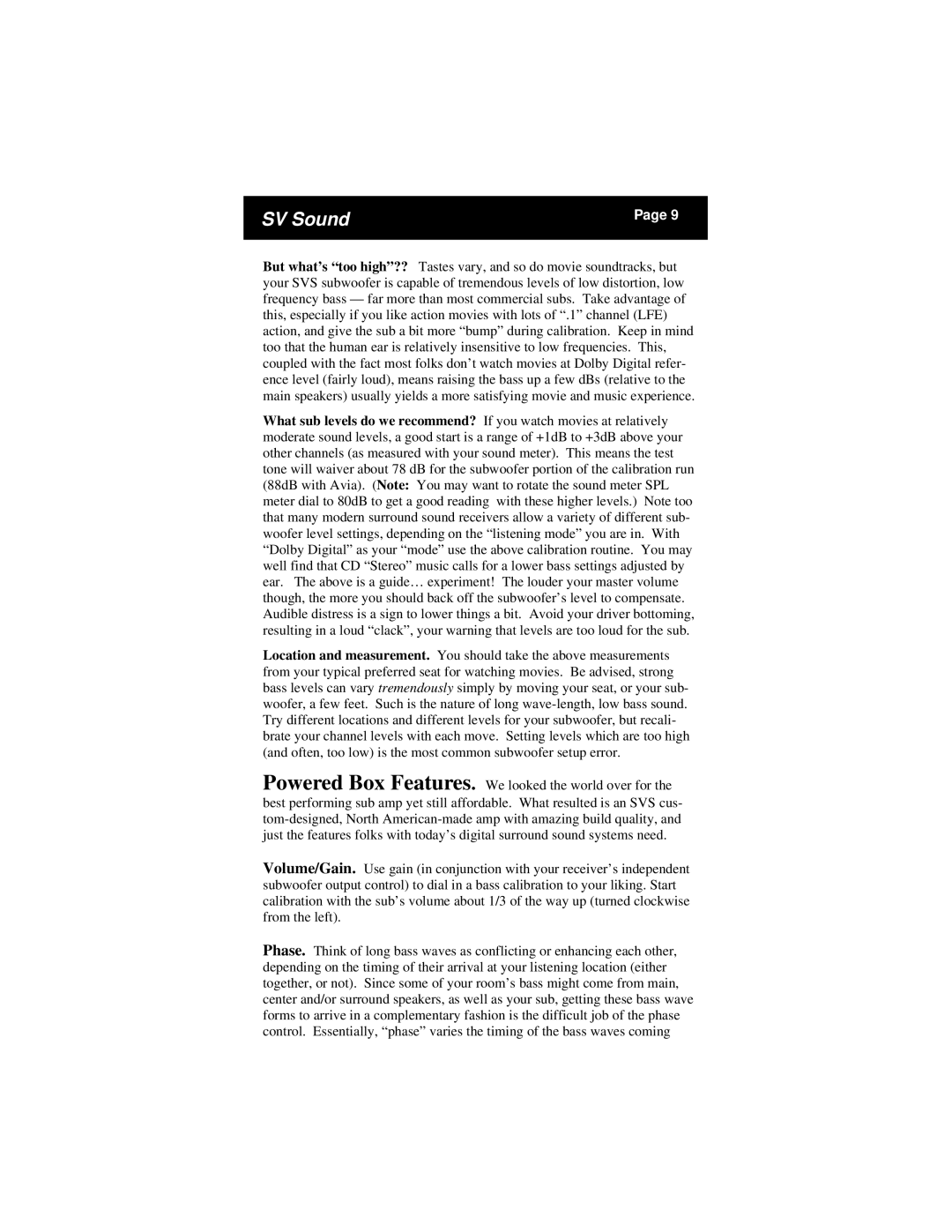SV Sound
PagePage9 9
But what’s “too high”?? Tastes vary, and so do movie soundtracks, but your SVS subwoofer is capable of tremendous levels of low distortion, low frequency bass — far more than most commercial subs. Take advantage of this, especially if you like action movies with lots of “.1” channel (LFE) action, and give the sub a bit more “bump” during calibration. Keep in mind too that the human ear is relatively insensitive to low frequencies. This, coupled with the fact most folks don’t watch movies at Dolby Digital refer- ence level (fairly loud), means raising the bass up a few dBs (relative to the main speakers) usually yields a more satisfying movie and music experience.
What sub levels do we recommend? If you watch movies at relatively moderate sound levels, a good start is a range of +1dB to +3dB above your other channels (as measured with your sound meter). This means the test tone will waiver about 78 dB for the subwoofer portion of the calibration run (88dB with Avia). (Note: You may want to rotate the sound meter SPL meter dial to 80dB to get a good reading with these higher levels.) Note too that many modern surround sound receivers allow a variety of different sub- woofer level settings, depending on the “listening mode” you are in. With “Dolby Digital” as your “mode” use the above calibration routine. You may well find that CD “Stereo” music calls for a lower bass settings adjusted by ear. The above is a guide… experiment! The louder your master volume though, the more you should back off the subwoofer’s level to compensate. Audible distress is a sign to lower things a bit. Avoid your driver bottoming, resulting in a loud “clack”, your warning that levels are too loud for the sub.
Location and measurement. You should take the above measurements from your typical preferred seat for watching movies. Be advised, strong bass levels can vary tremendously simply by moving your seat, or your sub- woofer, a few feet. Such is the nature of long
Powered Box Features. We looked the world over for the best performing sub amp yet still affordable. What resulted is an SVS cus-
Volume/Gain. Use gain (in conjunction with your receiver’s independent subwoofer output control) to dial in a bass calibration to your liking. Start calibration with the sub’s volume about 1/3 of the way up (turned clockwise from the left).
Phase. Think of long bass waves as conflicting or enhancing each other, depending on the timing of their arrival at your listening location (either together, or not). Since some of your room’s bass might come from main, center and/or surround speakers, as well as your sub, getting these bass wave forms to arrive in a complementary fashion is the difficult job of the phase control. Essentially, “phase” varies the timing of the bass waves coming
